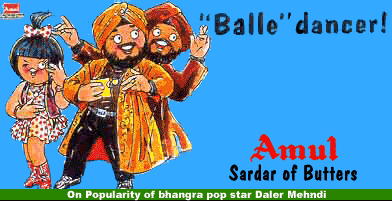The questions I'd written up, which were among about 20 questions that had been pre-circulated to conference participants, were essentially ignored -- but there was plenty to talk about nevertheless.
Suketu Mehta.
I had posted something on Mehta's Maximum City earlier, but I don't think I gave the book as much credit as I should have.
The book is a pretty compelling work of investigative journalism -- the interviews he gets, the topics he covers, the depth and richness of his analysis. The one thing to watch out for (and commentor Marginalien [Manjula Padmanahban, I believe] noted this here) is, it's sometimes really, really dark. The chapter on the "Special Branch" of the Bombay police force is especially frightening to read.
At the panel, Mehta talked a bit about how his early journalistic essays on AIDS in India and the Union Carbide disaster in Bhopal led him down the path to Maximum City. He mentioned in particular the story of a survivor of Bhopal, who had lost his entire extended family in 1984 (the year of the disaster). Over the course of the next 11 years, this survivor had turned into a kind of street hustler, who exploited his victimhood at every turn, and also did much shady business on the side. For Mehta, this kid was interesting as an example of "moral complexity"; one sees something similar in many of the characters one encounters in Maximum City.
One of the respondents raised the issue of Mehta's seeming nostalgia at some moments in the book. Mehta refers to the rise of a "New Bombay," dominated by a class of entrepeneurs who in fact do not come from the elite, English-speaking world on Malabar Hill, but essentially from anywhere. The new class has few of the inhibitions or scruples of the old ruling class, but it clearly has a great deal of energy and diligence. It is also, it should be said, largely composed of Maharashtrians, and is in some sense tied to the rise of the Shiv Sena in both the government of Bombay the city and at the state level in Maharashtra. The "nostalgia" question led to some pretty lively discussion. After being criticized for seeming to endorse the old Bombay over the new one, Mehta read the following passage from the book:
The Bombay I have grown up with is suffering from a profound sadness: the sadness of lost ownership, the transfer of the keys to the city. No longer is the political life of the city controlled by the Parsis, the Gujuratis, the Marwaris. This passage was marked by the candidacy of Naval Tata in 1971. The powerful industrialist ran as an independent from the Mumbai South constituency, the richest and smallest in the country, and still he lost. In India, unlike in America, fabulous wealth by itself can't buy you an election. Just about the only way the upper class will get into politics now is by being nominated to the upper house of parliament.
As I read it, it's not so much nostalgia here as it is a recognition of the impossibility of occupying a position other than the one that's been given. The kinds of politicians that rule Bombay now -- amoral, but also entrepeneurial, energetic, and perhaps even effective -- are not people one would want to be like. It's dishonest to say that the particular kind of democratization taking place is something "we" (members of India's old elite class) can embrace. If "we" are quite scrupulously honest, we can also admit that the conditions that created the dominance of the old elites were a mix of British colonial patronage and clannish family trade connections (Parsis, Marwaris, Gujuratis) that were as exclusionary as they were recalcitrant to modernization.
Samina Ali
Secondly, I was impressed by Samina Ali.
I managed to get to about the half-way point of her book Madras on Rainy Days the weekend before the conference. The novel is quite critical of the treatment of women within Islam, but the criticisms are given in muted rather than strident terms. This is not the domain of Deepa Mehta's Fire, where all the men are bastards and the women are victims. I should also add that the parts of the novel I've read are rich with interesting observations and finely observed details: Madras on Rainy Days might be a good way for people to gain some familiariztion with how Islam is lived in Old City, Hyderabad.
Perhaps most importantly, at the panel Ali talked about her involvement in a movement called the Daughters of Hajar, along with the outspoken activist and commentator Asra Q. Nomani. A few months ago, they made international headlines when they marched on a Mosque in Morgantown, West Virginia, demanding that women be allowed to pray in the central chambers (they had earlier been required to enter the Mosque through the back door, and pray in a separate room).
At the panel (and all this was in response to a question I had asked), Samina Ali seemed a little ambivalent about this. While she was proud of her involvement in the protest in Morgantown, she said she decided to "take a step back" from the organization after it seemed to have been "hijacked" by the interests of the right-wing voices of the American media. So when Amina Wadud led prayers at a Mosque in New York City three weeks ago -- again getting major press attention -- Ali deliberately decided not to be involved. She spoke about all this with a great deal of passion and force; I was happy that my question inspired it.
I can understand Ali's ambivalence about these protests, but I can't help but feel that, if you feel something strongly enough, you should stick with it even if the wrong people are on your side.
